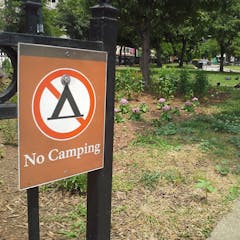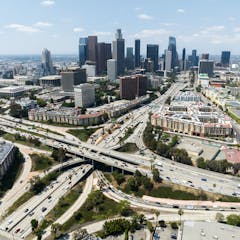
Articles sur City planning
Affichage de 1 à 20 de 135 articles

Anti-camping laws are the centerpiece of the ‘hostile design’ strategies cities use to push the unhoused out of public spaces.

Anti-camping laws are the centerpiece of the ‘hostile design’ strategies cities use to push the unhoused out of public spaces.

Walking is a common way of getting around in most African cities

The Canadian federal government is pursuing the idea of “smart cities,” but in the wrong way.

Tall. Straight. Abundant flowers. And a stunning trunk. What’s not to like about the spotted gum?

Despite adopting the goal of creating medium-density neighbourhoods to end urban sprawl, our cities have struggled to achieve it. Confused debates about ‘good density’ are part of the problem.

An analysis by scholars at the University of California, Davis showed that just a small number of cities in California actively consider racism when developing their plans.

Who the taxi strike affected, where and how shows the violent reality of the city’s spatial injustice.

A project to upgrade a high school playing field led to a book on how to inspire more young people to pursue careers as urban planners.

The centralisation of planning power is exactly what Sydney doesn’t need. While not perfect, the commission broke the mould of top-down, siloed planning and broadened the focus across the whole city.

Our largest cities, home to 80% of the population, are central to achieving sustainability in a time of climate change. The federal government has begun to act on the need for coherent urban policies.

Vital records document the birth, death, marriage and divorce of every individual. A more centralized system in the US could help public health researchers better study pandemics and disease.

Accra could keep its political role while some of its other functions are distributed around the country.

The Hoddle Grid that dictates the flow of vehicles and people in central Melbourne has had its day. It can be remade to reduce the dominance of cars and create a liveable city for the 21st century.

Shade, street furniture, streetscapes – they all matter when it comes to making a footpath appealing.

The zoning policies that planners introduced to create vibrant and resilient mixed-use neighbourhoods have had the opposite effect, as services and residential developments crowd out light industry.

Ontario’s first Growth Plan won awards that recognized the province as a leader in the field. But since then, successive changes to the policy have sabotaged the original plan’s progress.

A bid to amend plans for the final stage of the Barangaroo project would once again favour developers’ interests over the public interest. It shows how badly the planning process has been undermined.

My research shows how urban design can make it harder for women in some countries to make sustainable choices.

Most new capitals are dreary, overpowering, underserviced and unaffordable. Here’s how Nusantara, Indonesia’s new planned capital, can avoid the same pitfalls.
